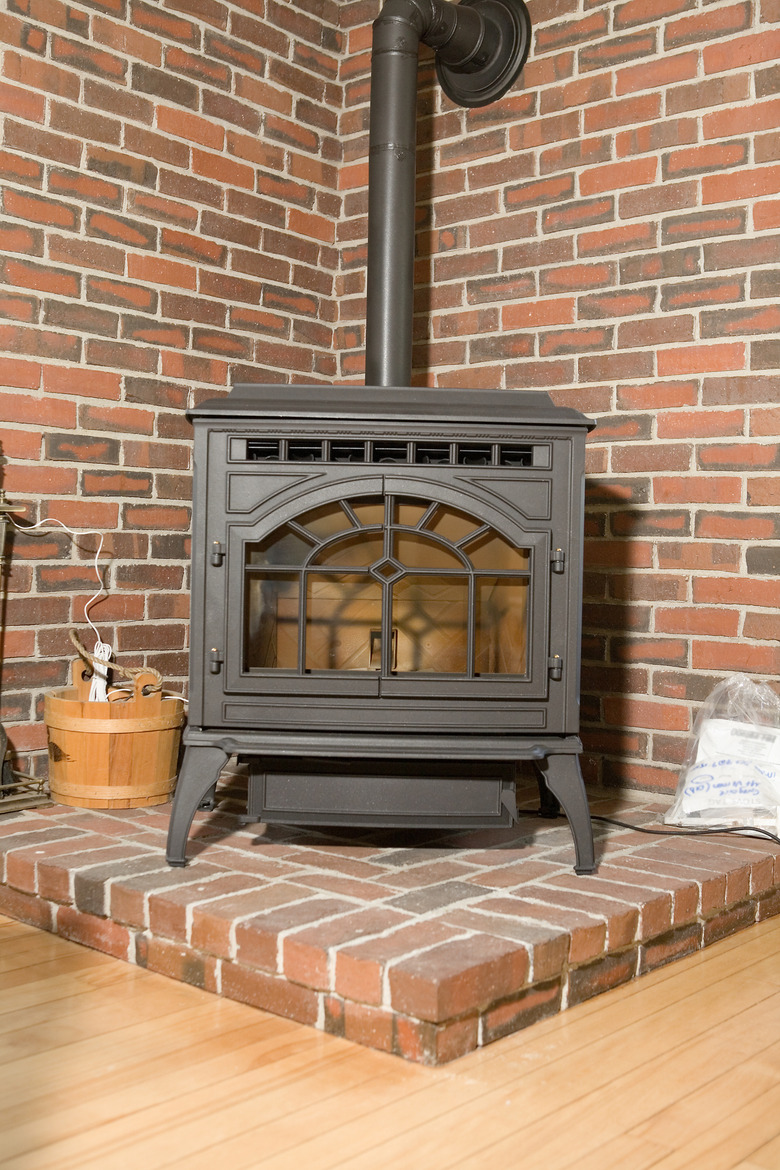Carbon Footprint Wood Pellets Vs. Wood
Wood stoves and pellet stoves both burn plant waste. Wood stoves burn cut firewood; pellet stoves burn small, compressed pellets made from sawdust or wood chips. The U.S. Environmental Protection Agency (EPA) defines carbon footprint as "A measure of the greenhouse gases that are produced by the activities of a person, a family, a school or a business that involve burning fossil fuels." The carbon impacts of these two wood fuels can lower greenhouse gas emissions — sometimes.
Pellet Stove Carbon Footprints
Pellet Stove Carbon Footprints
According to a 2009 study published in the journal "Environmental Science and Technology," using 100 percent wood pellets instead of 100 percent coal in industrial facilities would result in a 91 percent reduction in carbon emissions. Replacing coal with a mix of natural gas and pellets can result in a 78 percent reduction in carbon emissions. According to ConsumerReports.com, emissions from wood pellets are so small that the EPA does not regulate them, as they do wood stoves.
Wood Stove Carbon Footprints
Wood Stove Carbon Footprints
Burning wood is considered by most experts to be a carbon-neutral source of energy. Trees sequester carbon as they grow. That carbon is eventually released after a tree dies, either as it rots on the forest floor or as it burns in a fireplace. Since trees are a renewable resource, that carbon is later reclaimed by another tree. Strauss and Schmidt of FutureMetrics found that wood produces the same carbon dioxide emissions, or slightly less, than burning coal. If firewood production is sustainable and the wood stove is an energy-efficient modern model, burning firewood can be a low-carbon-footprint heating option.
Logging Practices
Logging Practices
Large-scale logging using heavy machinery or clear-cutting strategies makes the carbon footprint of wood fuels skyrocket. "Industrial logging is a major source of carbon emissions, a primary driver of deforestation and threatens to derail the U.N. process to reduce deforestation," according to a policy brief submitted by The Nature Conservancy at U.N. climate talks in Bonn, Germany. Experts only consider wood to be a carbon-neutral fuel when it is collected using sustainable practices that avoid clear cutting and minimize fuel use — and if it is sold locally to avoid the carbon emissions that come with long-distance transportation.
Hidden Carbon Uses
If your stove uses a blower to circulate air or a pellet dispenser that's powered by electricity, you must factor that energy use into your stove's footprint. If your wood or pellets are transported across long distances to get to your stove, consider the fuel used in transport — vehicles are responsible for 51 percent of our total carbon emissions, according to the U.S. Department of Energy. If your pellets are shipped hundreds of miles and you have a source of firewood right outside your back door, your carbon footprint will be lower if you choose the wood.
References
- Environmental Protection Agency: Glossary of Climate Change Terms
- University Corporation for Atmospheric Research: How Much Carbon Dioxide (and Other Kinds of Greenhouse Gas) Is Already in the Atmosphere?
- The Nature Conservancy: Policy Brief: Don't Forget the Second 'D': The Importance of Including Degradation in a REDD Mechanism
- Environmental Science & Technology: Life Cycle Emissions and Cost of Producing Electricity from Coal, Natural Gas, and Wood Pellets in Ontario, Canada
- Consumer Reports: Buyer's guide to pellet- and wood-burning stoves
Cite This Article
MLA
Maclin, Ellie. "Carbon Footprint Wood Pellets Vs. Wood" sciencing.com, https://www.sciencing.com/carbon-footprint-wood-pellets-vs-wood-4540/. 24 April 2017.
APA
Maclin, Ellie. (2017, April 24). Carbon Footprint Wood Pellets Vs. Wood. sciencing.com. Retrieved from https://www.sciencing.com/carbon-footprint-wood-pellets-vs-wood-4540/
Chicago
Maclin, Ellie. Carbon Footprint Wood Pellets Vs. Wood last modified March 24, 2022. https://www.sciencing.com/carbon-footprint-wood-pellets-vs-wood-4540/
